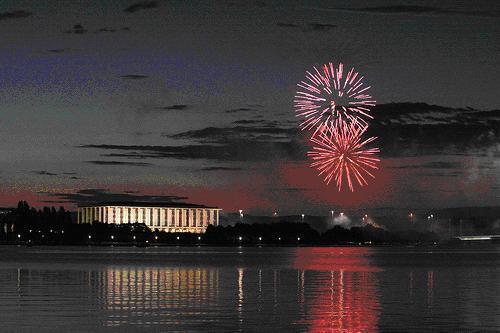Wonga Park, Victoria, Australia
Suggest Place to Visit
317
Track to location with GPS |
 |
Before European settlement, the area where Canberra is located was inhabited by the Ngunnawal and Walgalu tribes. The Ngarigo lived southeast Canberra, the Gundungurra to the north, the Yuin on the coast and the Wiradjuri to the west. Archaeological evidence from the Canberra region suggests human population for 21,000 years. The word ´´Canberra´´ is said to derive from a local word of the Ngabri, one of the Ngunnawal, or alternatively from the word Kambera which means ´´place of encounters´´ in the Ngunnawal language. The name Ngunnawal was apparently used to refer to the corroboree that served as protection during the seasonal migrations of the population in the Bogong moths that took place in the region each spring.
European exploration and conquest began in Canberra in the early 1820s. Four expeditions arrived between 1820 and 1824. The first white villages in the region date back to 1824, when a farm or station was built where the town is today. Acton Peninsula, by ranchers hired by Joshua John Moore. Moore formally bought the lands in 1826, and gave them the name Canberry. The European population in the Canberra region continued to grow slowly during the 19th century. Among them was the Campbell family of ´´Duntroon´´; its imposing stone house belongs today to the Royal Military College. The Campbells encouraged the establishment of Scottish farmers to work on their land, such as the Southwells of "Weetangera". As the European population increased, the indigenous population was decreasing, mainly due to diseases such as smallpox or measles.
On January 27, 1972, the Aboriginal Tent was established for the first time in the vicinity of Parliament; was created to draw attention to indigenous rights and land issues and has been continuously occupied since 1992. On May 9, 1988, a larger and more permanent House of Parliament was opened on Cerro Capital as part of the celebration of the bicentennial of Australia. In December 1988, the Australian Capital Territory gained its autonomy after an act in the Commonwealth Parliament. The first elections followed in February 1989, where 17 members were elected to the Legislative Assembly. The Labor Party formed the first government in the Capital Territory, led by Prime Minister Rosemary Follett, who was the first woman to lead the Australian government.
On January 18, 2003, parts of Canberra were ravaged by a large fire that killed four people and destroyed 491 houses, as well as destroying the main telescopes and the research workshop of the Mount Stromlo Observatory of the Australian National University.
Canberra, also admitted in Spanish Canberra with a population greater than 300,000 inhabitants. It is located in the northern part of the Australian Capital Territory, 300 kilometers southwest of Sydney and 650 kilometers northeast of Melbourne. The Canberra location was selected for the position of the national capital in 1908 as a compromise between Sydney and Melbourne, the two great cities. It is different from other Australian cities in that it was built from scratch, as a planned city. Following an international competition for the design of the city, the project by Chicago architect Walter Burley Griffin was selected and construction began in 1913. The design of the city was influenced by the 'garden city' movement and incorporated into different natural vegetation areas, which led Canberra to obtain the title of 'capital of the bush'. Despite the fact that Canberra's growth and development was hampered by the two world wars and the Great Depression, after World War II it became a prosperous city.
As the seat of the Australian Government, Canberra is home to the Australian Parliament and the Supreme Court of Australia, as well as numerous agencies and Ministries. There are also several social and cultural institutions of national importance. The Federal Government contributes a large percentage to GDP and provides a wide labor supply. Canberra is a popular destination for domestic tourists, but also for foreigners.
Canberra has a wide cultural offer that includes cinemas, theaters, museums, art galleries, sports and outdoor activities, shopping, parks and natural areas.
Comments
We don´t have yet any comments about:
Canberra General Information
Canberra General Information
Be the first to leave a comment as it is very important to inform other people
Outros locais a visitar
Within a radius of 20 km from:Canberra General Information
Unfortunately we do not have information on other places to visit in this area yet
Hotel reservation near Canberra General Information within a radius of 20 km
No results
Why to book with RUTAS TURISTICAS
The best prices
Our partnerships with the world´s largest operators offer research on the best market prices.
More options
At Rotas Turisticos you can book the hotel, buy the air ticket, book the transfer from the airport to the hotel and vice versa, book the local excursions, rent the car, take travel insurance and consult the places to visit and where to go.
Holiday Tips & Destinations
Hundreds of holiday destinations with all the options that allow you to easily choose the destination that best suits your dream vacation.
RUTAS TURISTICAS
Links





